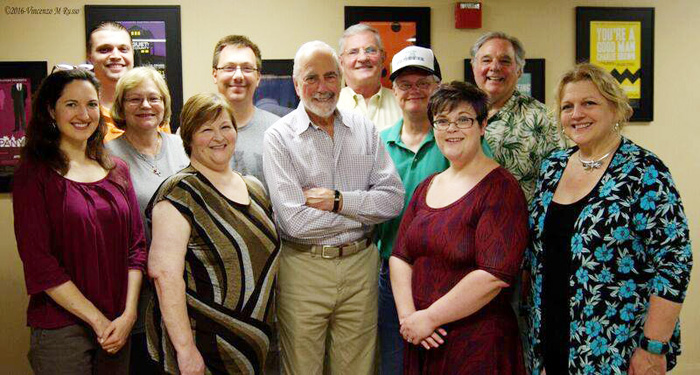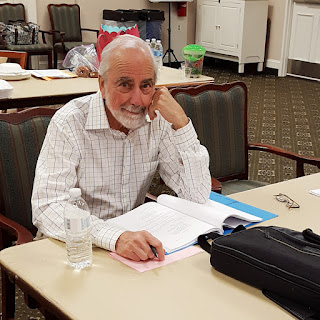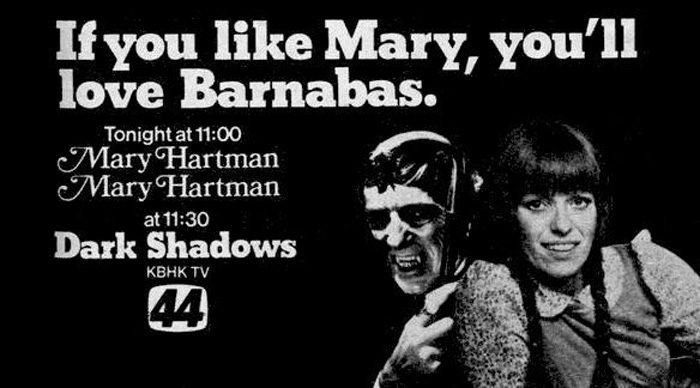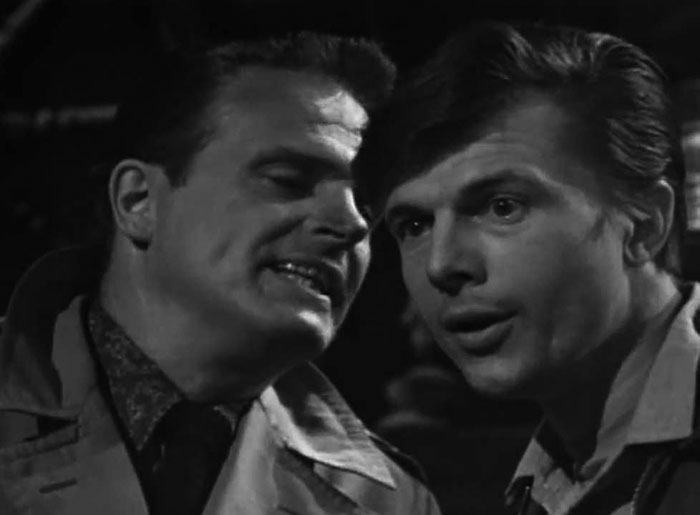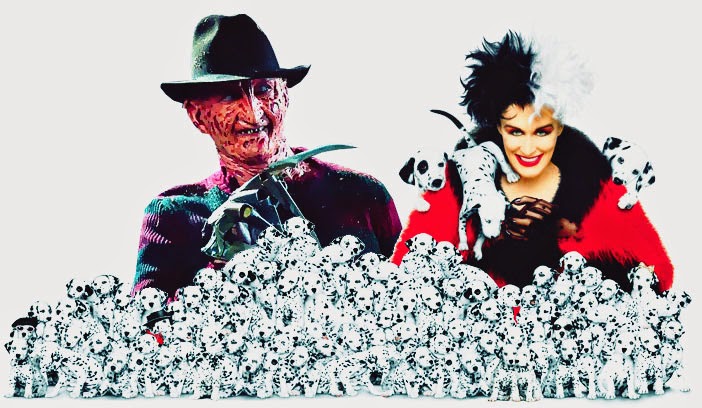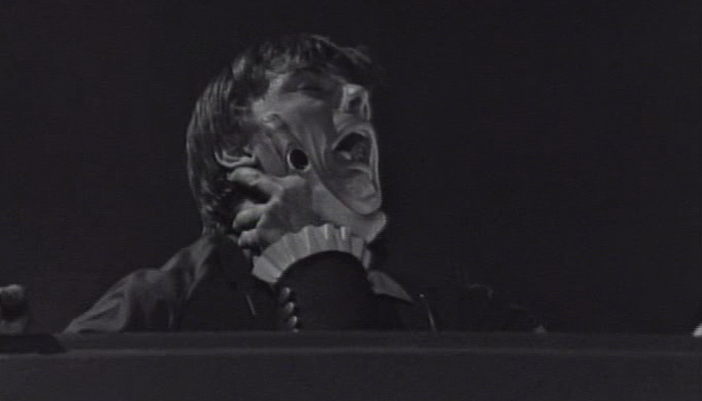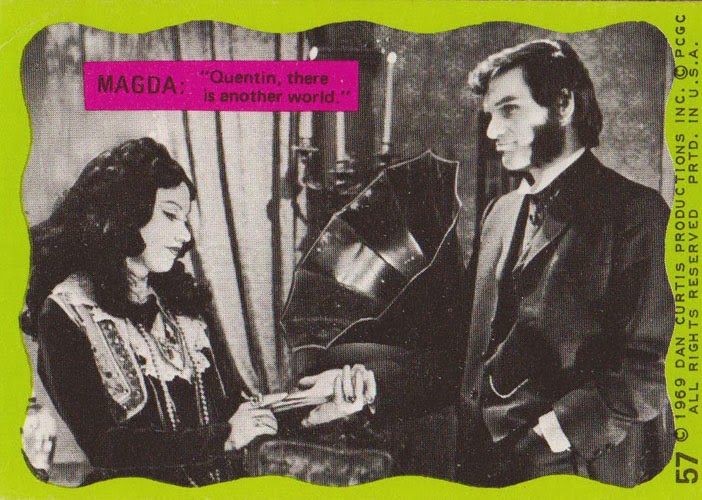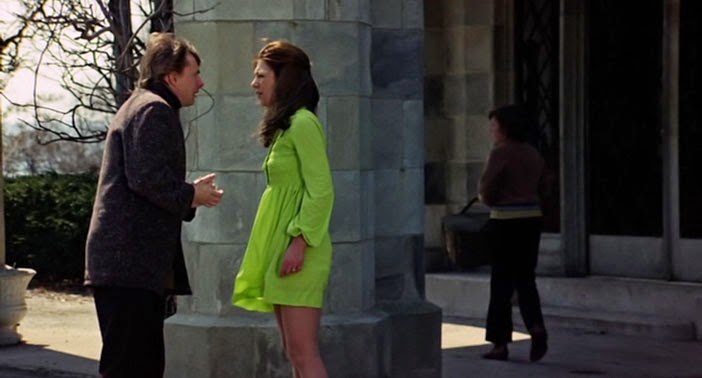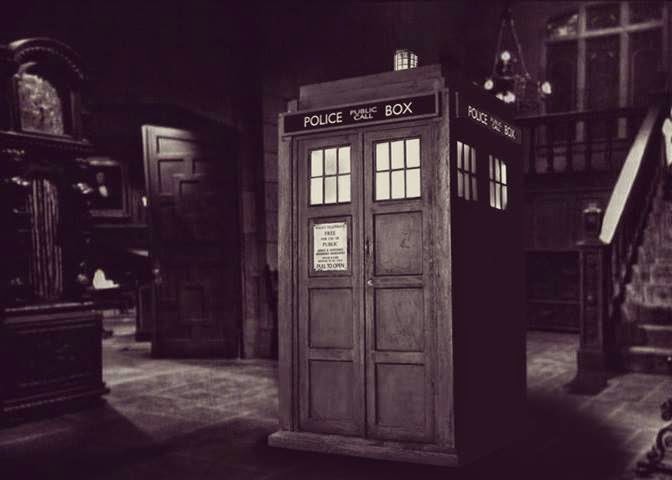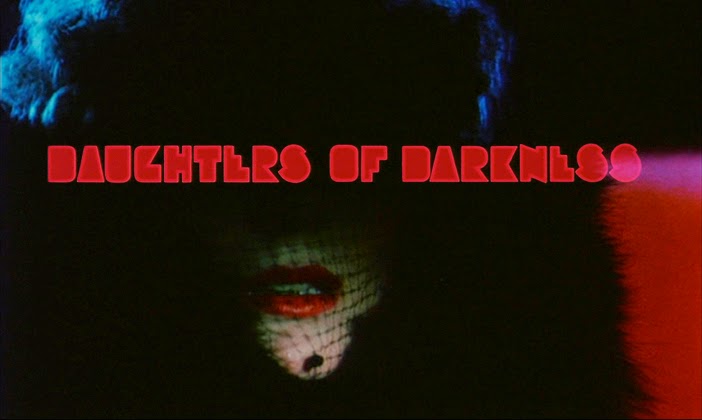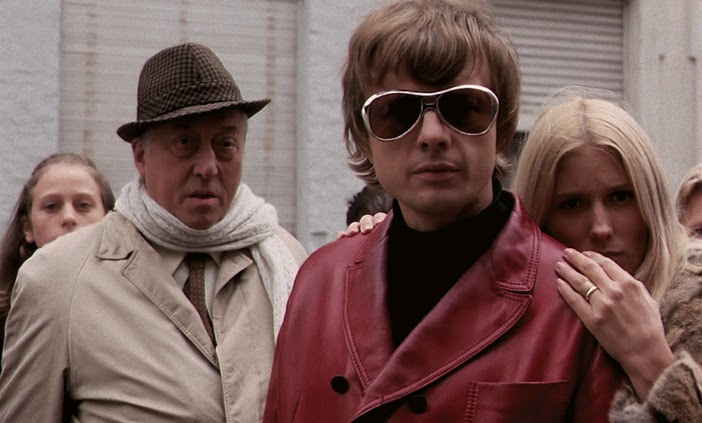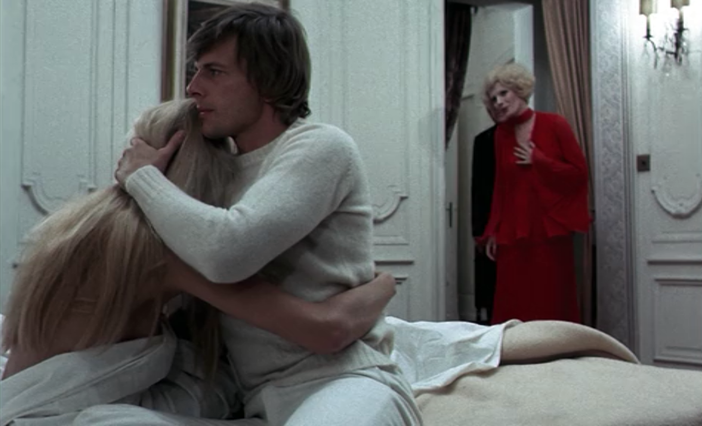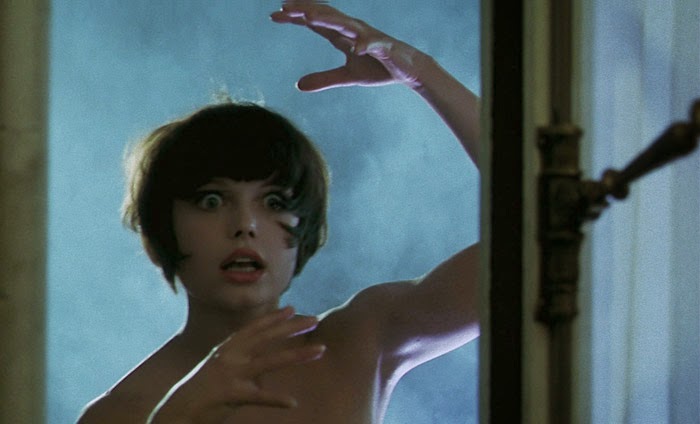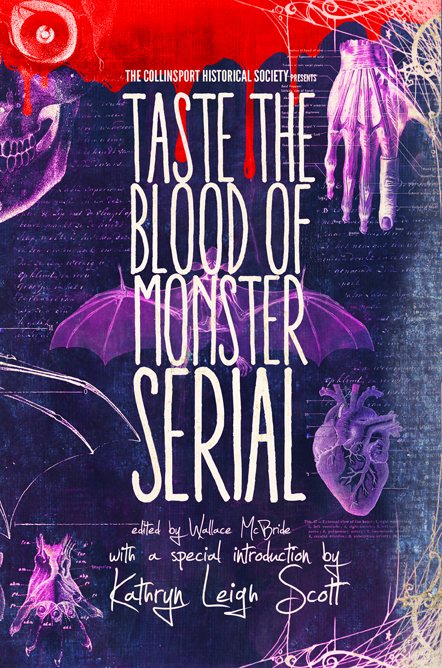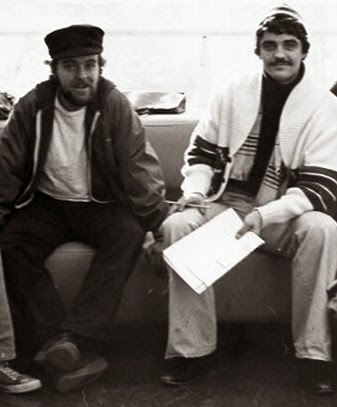By
MARIE MAGINITY,
author of the Willie Loomis World Series and other DS fanfiction
The
Collinsport Chronicles is a 51-part series with more meticulous,
concurrent storylines than a soap opera, brought to screen and paper by
the highly imaginative Adriana Pena under the pen name Maryland Rose.
When I refer to it in my title as chronic, I don’t mean to imply it is
disease ridden, but refer to the definition
“pertaining to a
long-lasting condition.” Then again, Urban Dictionary also defines the
word as
“very high-quality weed, generally with red hairs on it,” but,
to the best of my knowledge, this does not apply.
She has
published short stories in fanzines under her real name, using Maryland
Rose only for the humor pieces. In one, Barnabas transforms Rosanne
Rosannadanna into Josette. In another offering, Carl Collins haunts
Barnabas and Quentin every April Fools’ Day, subjecting them to all
sorts of practical jokes. She gives credit for the original idea to
Geoffrey Hamell, a prominent DS fan and fiction writer in the 1980s.
Adriana
Pena was born in Argentina. She lived and studied there until age 20,
when her family fled after the overthrow of President Illia in 1966.
Rebels took over the University of Buenos Aires, where her parents
worked, as an excuse to cleanse it of “Communism.” They beat students
and professors in what was called the “Night of the Long Sticks.”
Although the Penas were not present at the atrocity, they made an
understandably hasty exit at the first opportunity.
The experience left an indelible impression on the young woman and gave her an interesting slant on life.
“Even
if you have nothing to do with politics, politics would have its way
with you anyway. A lot of what I learned [during that time] ended up in
my fiction, in one way or another. While, for many, DARK SHADOWS is an
escape from reality, in fact, it is a way of talking about reality in
metaphoric ways, so that it will be easier to handle.”
Adriana
watched the series in its original run, though not from the very
beginning, because she arrived in the US in 1968 and, for a while, her
ABC affiliate would not transmit it. I wonder if the station manager was
named Trask.
I asked Ms. Pena, as I do every author, how did she get hooked on DS and what inspired her to start writing about it?
“I
was fascinated by it; it resonated in more ways than one. During its
final year, though, I became an irregular viewer. I had strong views
about what [the show] meant and how it should go, and it made me mad
when the writers did not follow my wishes.”
This is a common
theme among fan fiction writers — I call them the revisionists; they
include the writers of alternate universe and single POV stories. Others
are supplementalists (a word I just invented), who indulge in prequels
and sequels. Third (and last) are the recyclers, who simply retell the
original story, presumably for some cathartic purpose and to relive it
vicariously through their keyboards. Some authors (such as I) fall into
all three categories, so I shall reserve judgment.
“The 1840
sequence was a retread; they lost out on a lot of wonderful
opportunities. Also, there were awful continuity problems with so much
time travel. For instance, Quentin's staircase went through dimensions
as well as time (there were a few bugs in the system), so that both the
1840 and the 1897 events do not clash — Grandma Edith is alive and Quentin
I dies without issue, so that Gabriel's children inherit, and thus we
have Gabriel's descendants instead of Quentin's in 1897.”
When
the television series ended, Adriana resigned herself to move on and
turned her attentions to reading fantasy and science fiction. After
living in Pennsylvania, she moved to Texas for a spell. During that time
she had the privilege of seeing Jonathan Frid perform as Lionel
Barrymore in
THE ROYAL FAMILY, and again visions of DARK SHADOWS danced
in her head.
“I started obsessing over it, and began to wonder:
It has been over ten years; what are they doing now in Collinsport? So
the Chronicles began. I wrote a short story where I set out what I
thought might happen.
“Barnabas was an irritating, undead Felix
Unger. Angelique and Barnabas lived together, but she realized that
Barnabas had collected so many scars and neuroses along the way, that he
was no longer the man she fell in love with — that, in fact, he had
become insufferable.
“Barnabas’ and Julia's relationship reached
a rupture point when he took to reading her textbooks. During those
long, boring nights alone, he read anything he can get his hands on — and
started telling her how to run her practice. Later I explore what
happens when Barnabas runs out of money and needs a job.
“Carolyn became a real bitch after Elizabeth went cougar and stole her fiancé.
“Maggie
became a U.S. Representative. Later I realized that this allowed me to
defuse the problem of Maggie remembering what Barnabas did to her. She
remembers alright, but what concerns her most is that no one learns of
her time in an insane asylum. That means no mention at all of what
happened in 1967, or she will deep-six you.”
And that’s just the
first story. It was basically a one-shot, she told herself, just for a
bit of fun. Meanwhile, Adriana discovered fanzines and subscribed to The
World of Dark Shadows (TWODS), and started on her first sequel.
“If
Barnabas was a Felix Unger type, where was Oscar Madison? So an
original character, Elmer Urrey/Derek Pearce, was born. I was inspired
by an Odd Couple episode in which Felix gives money to Oscar to buy a
burial plot, and Oscar puts the money on a horse that cannot lose, but
does anyway.”
If it takes place at a racetrack, sounds to me like a role for John Karlen.
Perhaps
the word chronic is appropriate because it is so often associated with
long-lasting disease. That’s one way to describe why we addicts feel
compelled to churn out sequel after sequel. This is the last one, I
swear; I won’t write any more — after the one after this. Seriously, we
need some sort of 12-Step Program. My one-shot prequel is now gestating
#7, and I can picture myself at age 90-something, writing triple-digit
stories about my equally ancient protagonist.
Thus, Adriana’s
second story begat a third, which couldn’t be helped because #2 ended on
a cliffhanger. A fourth followed, and the rest, as they say, is
history. Ms. Pena went on to establish herself as one of the most
prolific writers of DS fanfiction.
“I went into a routine,
writing 30 lines a day by hand. When the rough draft was finished, I put
it aside for a month while I continued with the next installment. Then I
would revisit the original and make a coherent story out of it (and,
knowing what would happen next, adjust as necessary). This would be
followed by another month in storage, revision into a final ‘clean’
copy, and put it out for publishing.
“I attempted to copyright
the works, but U.S. Copyright Office rejected them, saying they wanted
the best edition. I told them those pages (with holes punched and
construction paper covers assembled in my bedroom) were the best
edition. I had to state that it was derivative work, and I used someone
else's characters and plots, but added new stuff.
“Other stories
were published in TWODS, and I know that a lot of people loved them. I
became a member of the Kathy Resch stable of fanfic writers. Meanwhile, I
was creating the Chronicles in my bedroom, “sold” them through ads in
various fanzines, and delivering the goods via U.S. Postal Service.
There was no profit; it was a labor of love.
“After a total of
51 Chronicles, I decided I wanted my life back. So I did the only thing
that could allow that to happen, and killed off Barnabas. After that, my
life got interesting, as I lost my job during the Bush I Recession,
went into business for myself and ended up in bankruptcy court.”
I hope this was not Karma biting Ms. Pena in the ass for killing off Barnabas.
“I
returned to Pennsylvania, moved back in with my parents and, after a
couple of years of working as a programmer, they presented me with a
proposition: I could stay with them, take care of them in their old age,
and then I would keep the house — and that’s what happened. The master
copies of the Chronicles came back with me, and stayed in their box for
many years. I kept saying, One day I have to get them out and do
something with them.
“In 2012, Jonathan Frid died, and once more,
it all came back to me. I began to contact old friends on Facebook and
decided it was time to put those Chronicles on the web. It took me a
whole year, and I was surprised at some of the things I had written.
Tweaks were necessary, some minor (having to do with pacing and
redundancies); some major (Vicky had to be cured of the I am secretly a
princess fantasy). But after so many years, I had been cured of some
delusions too.
“I had quite a bit of feedback back in the
eighties. People loved it, since the plots were getting weirder and
weirder. Someone commented how great it was to see the Three Stooges in
Collinsport. They referred to Quentin, Sebastian and Adam, who had tried
to use the hand of Count Petofi to disguise themselves, and ended up
looking like Curly Larry and Moe.”
The Chronicles saw the introduction of many original characters into the lives of the ones we all know.
• Iris, (who dates Barnabas briefly), Violet (her disturbed sister) and Peter (her nephew)
• Frank Torrance, a DC bureaucrat who gets Barnabas a government job and has a fling with Angelique.
• George Brant, the new sheriff in town
• Elmer Urrey/Derek Pearce, the Oscar to Barney’s Felix — chased by the Mob, tries to fix horse races through vampirism
• Old Munsungan, Harry Redwolf and the Indian tribe.
• Kenneth Anderson (Julia's husband) and daughter, Gretchen.
• Kira Petofi
• Tammy Innes, who turns out to be Barnabas’ great-great-great-great-granddaughter; she calls him honky
• Delia Harding, a hospital nurse with a taste for S&M.
• Frances Jackson, another nurse. Barnabas saves her life after a suicide attempt
• Louella Loomis (Willie's wife), Pearl (their daughter) and Robert Loomis (Willie's father)
• Xavier Davenport
• Alma Quarles (the innkeeper) and daughter Alma (the reincarnation of Sarah)
• Jake, who works at Wyndecliffe.
• Captain Todd, Sergeant Haskell, Doctor Blair and Victoria Collins (Chris Collins' wife)
• Edmund, son of Quentin and Maggie
• Sandy and Herbert Miller, a local couple, hostile to the supernatural community until…
• Oriana Falchi, a reporter who has a fling with Barnabas.
• Priscilla Collins, the ghost of Barnabas' first wife
• Anselm Trask, the white sheep of the Trask family
•
Zeb and Jessica King, who run the local VD clinic. They hunt for
Barnabas because Quentin has been using his name when picking up girls
in bars.
• Dr. Siegfried Verhoff (a friend of Freud, specializes in vampire children) and Cecily (a vampire child)
• Richard Zimmerman, Julia’s cousin. A Holocaust survivor who became a vampire while running from the Nazis
• Yolanda Overton, Sky Rumsen's niece
• Urien Yost, a street urchin adopted by Barnabas and George
• Zoya Zalisky, a gypsy who later becomes a phoenix
Now,
everyone pull up a session of Notepad, because there’s going to be a
pop quiz. In addition to keeping track of enough characters to populate a
small town, Adriana goes to great lengths to develop every idea to its
fullest potential.
“I am from the Three Stooges School, that is
to say, no story is finished until the maximum amount of catastrophe can
be extracted from it. Often the [original] writers did not realize what
they had in their hands and were fumbling, which is what happens when
you are churning out scripts daily; there is no chance to develop
interesting sidelines. So I grabbed up all those tantalizing bits and
pieces and tried to make sense of them.
“For instance, Quentin:
the portrait keeps him young by preventing changes, but that includes
mental changes too. In other words, Quentin has not learned one damn
thing ever since his portrait was painted — perfectly logical when you
think of it.
“I did not like to have the ‘normal’ characters
sidelined. After all, Roger was supposed to be a chief troublemaker, but
got demoted to saying witty things, brandy in hand. I restored both he
and son David to their troublemaker status. Had the writers kept to
their original concept, when David discovers Barnabas’ coffin, he would
not tell the adults, but rig an incendiary device to it. If I was to
make a remake of DS myself, I would have Barnabas discover that he is
the sane one of his family.
“I do not buy into that mindset that
evil only comes in supernatural form, and that normal people are just
innocent bystanders. Human capacity for mischief is unlimited, and a
supernatural creature that forgets that may have a very rude awakening,
which is why Elmer/Derek runs scared when the Mob is after him. The Mob
might not know how to kill a vampire, but Elmer is not hanging around
until they figure it out.
“I do not agree with the need to keep
reality at a distance, though that was part of the original charm; you
lose a lot of stories that way. There were Indian tribes in Maine, which
made for a great storyline. The black descendant of Barnabas brings in
the slave trade. Don’t forget the French Revolution. It always irritated
me that they sent Josette to Paris to go shopping in 1794 when
Robespierre was cutting off heads right and left. You ignore it and you
lose great stories about tumbrels going to the guillotine, knitting
ladies, and the Scarlet Pimpernel. If there is ever a DS remake, the
1795 storyline should be moved to 1785, when King Louis is still on his
throne.

“As the 1960s were a cusp for a change of attitude, the
goal should not be for Barnabas to be cured, but to learn to cope with
his condition and become a fact of life that people can live with. After
all, at this time, there were still some light-skinned blacks who
wanted to pass as white. There were also a lot of gays hiding in
closets or submitting themselves to therapies that would make Dr. Lang
seem sensible in comparison. So, given the change in attitudes, I
decided that Barnabas should not adapt but demand acceptance. Of course,
if he keeps feeding on different victims, soon there will be more
people who know than people who don't, until someone says ‘Barnabas
Collins is a vampire,’ and the answer is, ‘Oh, you noticed?’"
Give that man a picket sign that reads I’m dead, Blood’s red, Get over it.
The
author chose to set her stories 10 years after the end of the series,
in order to implement those changes. One excellent choice was the
resurrection of Megan Todd as a strong, competent, yet gorgeous woman.
When Barnabas employs his knack for making dippy decisions, she reminds
him that vampirism is no excuse for stupidity.
For me, Adriana’s
works are an amusement park fun-house ride. They fly this way and that,
whip around corners and everywhere you look, some new, often totally
outrageous (but not illogical) thing is popping up — sea monsters,
mermaids, Sigmund Freud, a take-off on Casablanca, old-school sorcerers
or Laura commanding an army of salamanders. Salamanders?
Why not? The possibilities are limited only by one’s imagination.
Marie Maginity
is the author of the six-part Willie Loomis World Series, and writes
under the names Mad Margaret and Lizzie Bathory. She has a BA in Theatre
and works as a professional actor, director and drama teacher. She has
had many “straight” jobs, including bartender, gas station jockey,
graphic artist, website designer, facepainter and film projectionist.
Once, she bullshitted her way into a newspaper job as a reporter and,
over the next eight years, became a copy editor, feature writer and
assistant editor. She lives in the suburbs of Philadelphia with one
husband, two daughters and two cats.

 We lost John Karlen this week. As someone who runs a website that's supposed to be fun and engaging, it always feels a little ghoulish to use these kinds of losses to give my website traffic a bump. At the same time, I've got content that people want to see, so it's foolish -- maybe even selfish -- to keep it under lock and key. In this case it's a 2013 interview with Karlen counducted by Marie Maginity for The Collinsport Historical Society podcast. This is one of many episodes that were tossed into the vaults following the podcast's integration with Spotify. This episode hasn't been available to the public for a while now.
We lost John Karlen this week. As someone who runs a website that's supposed to be fun and engaging, it always feels a little ghoulish to use these kinds of losses to give my website traffic a bump. At the same time, I've got content that people want to see, so it's foolish -- maybe even selfish -- to keep it under lock and key. In this case it's a 2013 interview with Karlen counducted by Marie Maginity for The Collinsport Historical Society podcast. This is one of many episodes that were tossed into the vaults following the podcast's integration with Spotify. This episode hasn't been available to the public for a while now.

